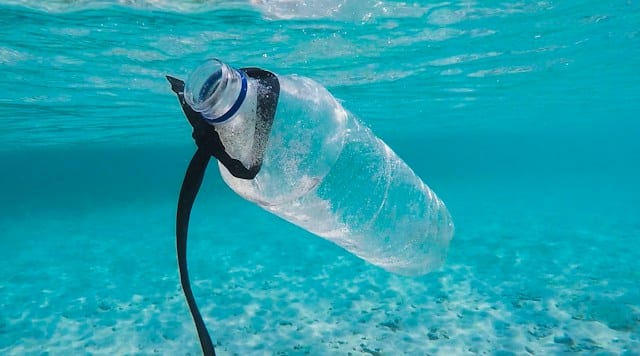From clogging our oceans to littering our landscapes, plastic waste poses massive environmental challenges. However, a new era of biodegradable plastics could be the solution we’ve been seeking. Let’s delve into the latest revelations in the world of biodegradable plastics, their properties, production methods, and applications, linking this exciting research to the broader context of environmental sustainability.
Biodegradable Plastics: A ray of hope
Biodegradable plastics, often referred to as bioplastics, are a type of plastic designed to decompose naturally over time. They’re made using renewable raw materials, different types of micro-organisms, petrochemicals, or a combination of these.
A lire également : How can AI optimize energy consumption in smart cities?
The production of these materials has been a hot topic in recent years, and for good reason. Bioplastics could significantly reduce our reliance on fossil fuel-based plastics, which not only produce harmful greenhouse gases but also contribute to the global plastic waste crisis when they’re not properly disposed of.
Recent advancements in biodegradable plastics have shown promising results, from enhanced material properties to innovative applications in numerous industries. In particular, scientists and researchers have been making strides in the production of PLA (Polylactic Acid), a type of biodegradable plastic derived from renewable resources like corn starch or sugarcane.
A découvrir également : What Are the Latest Developments in Mental Health and Well-Being Practices?
Polylactic Acid (PLA): The wonder polymer
Perhaps the most important development in the field of biodegradable plastics is the increased production and application of PLA. Recognized for its flexibility, PLA is a biodegradable polymer with a wide array of applications, from packaging to biomedical engineering.
Research, often accessible through academic databases like Google Scholar, is constantly being conducted to improve the properties of PLA. One recent study revealed the introduction of nanoparticles into the PLA production process, enhancing its strength, durability and heat resistance.
PLA has also made its way into the world of medicine. Innovative drug delivery systems based on PLA have been developed, with researchers designing controlled-release drug delivery systems using PLA nanoparticles. This could have revolutionary implications for the treatment of various diseases.
Revolutionizing Drug Delivery
The application of biodegradable plastics in drug delivery is a fascinating breakthrough. These materials have the potential to revolutionize the way drugs are administered, making treatments more efficient and less invasive.
PLA-based drugs, for example, can be designed to release medication at a controlled rate over a specific period. This reduces the frequency of drug administration, making the treatment process less disruptive for patients. As you can imagine, this is a game-changer in the field of medicine.
However, PLA isn’t the only biodegradable plastic making waves in drug delivery. Other biodegradable materials, including certain types of polyesters, are being used to create microscopic drug delivery vehicles. These "nanocarriers" can deliver drugs directly to targeted cells, improving the efficiency of treatments while minimizing side effects.
Biodegradable Plastics in Biomedical Engineering
Beyond drug delivery, biodegradable plastics have also proven useful in the field of biomedical engineering. These materials are being used to create a variety of medical devices, including sutures, prosthetics, and tissue engineering scaffolds.
In tissue engineering, biodegradable plastics can be used to create scaffolds that provide a structure for new cells to grow on. Over time, these scaffolds degrade, leaving behind only the newly formed tissue. According to recent research, PLA has been particularly successful in this application, thanks to its strength and biocompatibility.
Biodegradable plastics have also been used to create biocompatible coatings for medical devices. These coatings can reduce the risk of infection, inflammation, and other complications that can arise when a foreign object is introduced to the body.
The Future of Biodegradable Plastics
While the potential of biodegradable plastics is immense, it’s important to remember that these materials are not a silver bullet solution to our global plastic problem. There are challenges associated with their production and disposal, and they should be used as part of a broader strategy to reduce and manage plastic waste.
However, the recent breakthroughs in biodegradable plastics signal that we’re moving in the right direction. With continued research and innovation, these materials could play a crucial role in creating a sustainable future. We look forward to seeing what other developments will emerge in this exciting field.
Wound Healing Applications of Biodegradable Plastics
One of the latest advancements in the field of biodegradable plastics is their innovative application in wound healing. Biodegradable polymers, such as PLA, are being engineered into wound dressings that not only protect the wound but also facilitate the healing process.
Traditionally, wound dressings were designed to prevent infection, remove dead tissue, and absorb exudate. However, the new generation of biodegradable wound dressings are capable of more. They can release necessary growth factors, antimicrobial agents, and anti-inflammatory drugs in a controlled manner, promoting faster and more effective wound healing.
As per a recent study available through Google Scholar, a wound dressing based on PLA nanoparticles was found to enhance wound closure and collagen synthesis, paving the way for faster healing. The PLA nanoparticles in the dressing slowly degrade over time, releasing the drug at a controlled rate, making the healing process more efficient.
Moreover, these biodegradable wound dressings can be customized according to the wound site. They can be designed to match the mechanical properties of the tissue, reducing discomfort and providing better fit and flexibility compared to traditional dressings. The biodegradability of these dressings also eliminates the need for frequent changes, reducing patient discomfort and healthcare costs.
Biodegradable Plastics and Food Packaging
Apart from their biomedical applications, biodegradable plastics are also making headway in the food packaging industry. Traditional plastics have long been used in food packaging due to their durability, flexibility, and low cost. However, their environmental impact and the potential health risks associated with their use have prompted the search for safer and greener alternatives.
Biodegradable plastics have emerged as a promising solution. Food packaging made from biodegradable materials such as PLA not only reduces the amount of plastic waste generated but also has the potential to improve food safety.
A study on the application of PLA-based plastics in food packaging found that these materials can be designed to improve the shelf life of food. For instance, PLA packaging with nanoparticle additives can prevent the growth of bacteria, increasing the longevity of perishable food items.
Moreover, biodegradable plastics can be designed to respond to changes in temperature, releasing preservatives or antioxidants when required. This smart packaging can potentially reduce food waste, contributing to a more sustainable food system.
Conclusion: The Ongoing Journey of Biodegradable Plastics
While biodegradable plastics are making significant strides in various domains, it’s crucial to remember that they are only one piece of the puzzle in addressing the global plastic waste problem. Indeed, reducing our overall consumption of plastics, improving recycling processes, and adopting a more sustainable lifestyle are all critical to mitigating this issue.
That being said, the advancements in biodegradable polymers are undoubtedly a step in the right direction. From improving drug delivery systems and wound healing to revolutionizing food packaging, these materials are proving to be multi-faceted tools capable of driving sustainable change.
As we continue to innovate and research in this field, we can expect more breakthroughs in the application of biodegradable plastics. The possibilities are immense, and we are only just beginning to tap into them. Let’s keep the momentum going and continue to push the boundaries of what is achievable with these remarkable materials.













